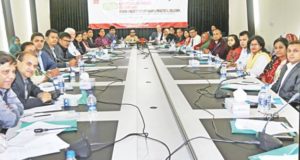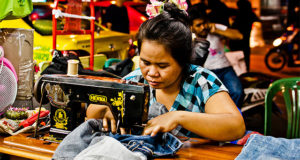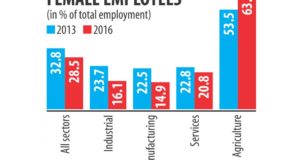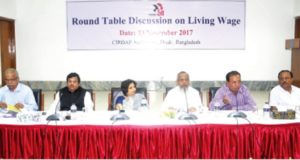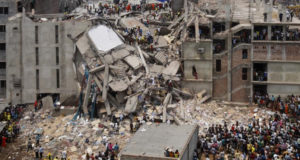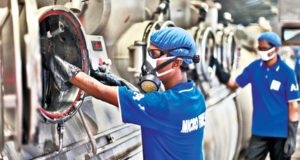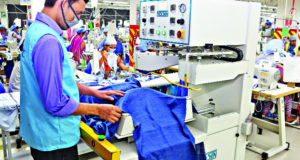Three quarters of women garment workers in Bangladesh stated to have experienced verbal abuse while 20 percent physical abuse, reads a report on the prevalence of gender-based violence in the garment supply chain.
Read More »Fast fashion still threatening worker safety, UK study shows
On 24 November 2012, a fire in the Tazreen Fashions factory in Bangladesh led to the death of at least 112 workers, while the collapse of the Rana Plaza building just five months later killed 1,134 garment workers and injured hundreds of survivors.
Read More »Number of female employees in Bangladesh down by 13.10 percent
The number of female employees fell 13.10 percent to 5.07 million in Bangladesh last year compared to 2013 mainly because of closure of subcontracting businesses in the garment sector, according to a new survey.
Read More »Bangladesh has the lowest GTF gender pay gap in developing Asia: ILO
The recent research note released by International Labour Organization (ILO) presents the latest employment and wage estimates within the garment, textile and footwear (GTF) industry of 12 major garment-producing countries in developing Asia, where Bangladesh was recorded having the lowest gender pay gap compared to others in the study perimeter.
Read More »China’s technological advancement can deter Bangladesh’s competitive advantage
China remains the undisputed global giant in the textile and apparel industry. Its share of global apparel export is about 37 percent while the share of Bangladesh, the second largest readymade garment exporter in the world, is only about 6 percent. So, it is completely understandable that the actions of China will obviously influence the competitiveness of the other manufacturing hubs like ours.
Read More »Survey says 64 percent of Bangladeshi RMG workers can’t meet daily expenses
A survey conducted by IndustriAll Bangladesh Council found that 64 per cent of readymade garment workers cannot bear all the expenses of their daily essentials. The workers need Tk 19,217 as monthly minimum pay to meet their family expenditure but the minimum wage in the sector is Tk 5,300.
Read More »The high cost of cheap clothes
On the morning of April 24, 2013, a poorly constructed eight-storey garment factory known as Rana Plaza collapsed in Dhaka, Bangladesh, killing more than 1,130 people in a crush of brittle concrete and rebar. It was the worst industrial disaster in the country’s history, but the toll didn’t end when the building fell. Many later died from injuries sustained in the collapse or were permanently physically disabled. Others developed PTSD or other mental health conditions from witnessing the event.
Read More »Industrial automation: a challenge for Bangladesh’s manufacturing future
Manufacturing will continue to be an integral part of securing a better economic future for Bangladesh. According to the World Bank, manufacturing contributed 28.6 per cent to the GDP (gross domestic product) in 2016, accounting for 13 per cent of the total employment.
Read More »Bangladesh should focus on skills development for growth in labour market
For attaining sustainable and high growth rate of an economy and improving the living standard of its people, the role of skill development cannot be over- emphasised. Skill development not only enhances and expands an individual's capacity of earning, the formation has the potential of transforming the nation's workforce into a more productive one and thereby contributing immensely towards the growth momentum of an economy.
Read More »Bangladesh in low growth category in 2025 Global Growth Projections
The Growth Lab at Harvard Univerity's Center for International Development very recently published the new 2025 Global Growth Projections, where Bangladesh was placed in the low growth category. The research organization works with the aim to understand the dynamics of growth and to translate those insights into more effective policymaking in developing countries.
Read More » CPD RMG Study Stitching a better future for Bangladesh
CPD RMG Study Stitching a better future for Bangladesh
